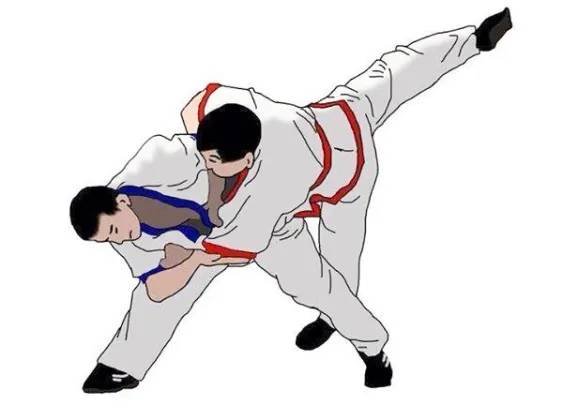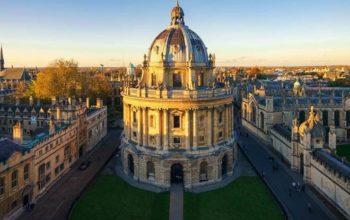
Pastukhov I.S., (PhD Reading) Patris Lumumba Russian University of People’s Friendship, Moscow, Russia

Knyazeva Ekaterina, Patris Lumumba Russian University of People’s Friendship, Moscow, Russia
Abstract. The article discusses the introduction of Chinese shuai jiao wrestling into the physical education curriculum at universities. The principles of Chinese shuai jiao wrestling are presented. The degree of influence of Chinese shuai jiao wrestling on the physical fitness of university students is also determined.
Keywords: University students, physical fitness, Chinese shuaijiao wrestling, physical education curriculum, principles of Chinese shuaijiao wrestling
In today’s social and economic conditions, the requirements for university graduates are constantly growing. Future specialists must have a high level of physical and psychological health.
The formation of a culture and values of a healthy lifestyle as the basis for sustainable development of society and the quality of life of the population is one of the tasks of the state. [3]
According to Panchuk N.S., in the process of physical education in higher education, future specialists are able to engage in physical exercise more consciously for the benefit of their body, which contributes to the harmonisation of physical and spiritual unity, ensures the formation of physical and mental well-being, and has a positive effect on the psycho-emotional sphere of the student’s personality. [1]
The comprehensive development of university students’ personalities is also possible through non-traditional sports included in the physical education programme, along with compulsory sports such as athletics, skiing and sports games.
Despite the great interest of students in some types of martial arts, modern methods of physical education within the Physical Culture programme at universities do not include non-traditional types of physical exercise. Martial arts are mainly present in the physical education of students only as part of additional courses.
The use of Eastern martial arts and a system of physical exercises based on elements of various types of Eastern martial arts in the physical education of students makes it possible to:
– more effectively teach the techniques of various sports exercises;
– increase the number of methods and techniques used in the physical, technical, tactical, moral-volitional and theoretical training of students;
– successfully develop the main or specific muscle groups that determine success in certain sports where maximum effort is required;
– apply exercises of various types that contribute to the strengthening of students’ muscular systems;
– perform complex coordination exercises in a specific mode with high quality.
The purpose of this study is to analyse the influence of Chinese shuai jiao wrestling as a basic means of physical education on the level of physical fitness of students at the Patrice Lumumba Russian University of People’s Friendship.
The main objectives of using Chinese shuai jiao wrestling in the training process with university students are:
1. improving health and increasing the level of physical development through Chinese shuaijiao wrestling;
2. teaching vital motor skills and abilities;
3. developing basic physical qualities through special shuaijiao exercises;
4. acquiring the necessary knowledge in the field of physical culture and sports, forming a motivational and value-based attitude towards physical culture;
5. increasing the need for independent physical exercise, being able to apply it to improve performance and acquire self-defence skills;
6. promoting the development of moral and volitional qualities, mental processes and personality traits. [2]
The basic principles of shuaijiao:
– simultaneous use of muscle strength and internal energy: victory in combat is achieved by the athlete who correctly uses external strength and internal energy. Chinese martial arts masters believe that a person’s internal energy is of great importance not only in combat, but also in everyday life. Muscle strength is one of the most important components without which it is impossible to apply fighting techniques and ultimately win a fight;
– Instant decision-making in a fight based on the situation at hand: in a fight, the fighter who senses the right moment to execute a particular move has the advantage. It is also necessary to be able to react quickly to your opponent’s mistakes. All this comes with experience; the more fights a fighter has had, the faster they are able to make decisions.
– Using only techniques that have been practised to perfection in combat: this is one of the basic rules. There may be only a small number of practised techniques, but they must be practised to perfection. All techniques must be highly effective.
– Psychological attitude to win the fight: being determined to win gives you certain advantages over your opponent. To win, you need to be able to keep your spirits up, believe in success and fight to the end.
We have developed and implemented a methodology for the comprehensive application of Chinese shuai jiao wrestling techniques in the physical education curriculum.
The experimental methodology for physical education classes includes a set of physical exercises based on the basic elements of Chinese shuaijiao wrestling, aimed at developing physical qualities and forming motor skills and abilities in students at the Patrice Lumumba Russian University of People’s Friendship.
The implementation of this methodology took place in three stages. At the first stage, it was necessary to familiarise students with the basic stances, movements, self-defence elements, as well as the elements of basic applied shuaijiao techniques, including preparatory exercises for various types of throws, through the leg of the same name, through the opposite leg with a leg grab, a flip with an arm and leg grab, with a grab and lift of both legs, a throw onto the back, a lift onto the shoulder, etc. The second stage is aimed at consolidating and improving the elements of shuai jiao technique learned in the first stage and studying a set of exercises aimed at familiarising oneself with defensive and counterattacking techniques in shuai jiao. The third stage involves familiarisation with the attacking techniques of Chinese shuai jiao wrestling, as well as the improvement of the sets of exercises learned in the first two stages. At this stage, students are shown attacking techniques such as punches, kicks, various types of grabs, as well as defensive and counterattacking techniques for these moves.
In order to determine the degree of influence of Chinese shuai jiao wrestling on the level of general and specific physical fitness, students at the Patrice Lumumba Russian University of Friendship were given physical tests at the beginning and end of the academic year.
The effectiveness of the experimental programme developed for the subject ‘Physical Culture’ using elements of Chinese shuai Jiao wrestling is confirmed by changes in the level of general (Table 1) and special (Table 2) physical fitness of students:
– in the experimental group, within the framework of the pedagogical experiment, significant and reliable changes were revealed in the test indicators characterising the level of general physical fitness of students. In the 100 m run, the result improved from 14.92±0.4 s to 13.81±0.38 s, and in the 30 m run from 4.9±0.11 s to 4.51±0.17 s. The result in the standing long jump improved from 201.1±3.1 cm to 219.1±2.2 cm. Hand grip strength increased: right hand from 45.0±1.7 kg to 61±1.0 kg, left hand from 38±1.4 kg to 51±1.2 kg. Flexibility in the forward bend test improved to 14.1±0.9 cm. The results in determining coordination abilities increased from 9.24±0.1 s to 8.51±0.1 s. Hand muscle strength indicators in pull-ups on a high bar increased from 6.2±0.1 to 8.7±0.1 times.
| Tests | Groups | Experiment | |
| Beginning | End | ||
| Pull-ups on a high bar | CG | 6,1+0,1 | 6,2+0,1 |
| EG | 6,2 +0,1 | 8,7+0,1 | |
| Standing long jump | CG | 201,4+2,1 | 203,2+3,6 |
| EG | 201,1+3,1 | 219,1+2,2 | |
| 30 m run | CG | 4.9+0,1 | 4,84+0,12 |
| EG | 4,9+0,11 | 4,51+0,17 | |
| 100 m run | CG | 14,96+0,35 | 14,88+0,45 |
| EG | 14,92+0,40 | 13,81+0,38 | |
| 1000 m run | CG | 4,25+0,11 | 4,24+0,13 |
| EG | 4,24+0,14 | 4,23+0,14 | |
| Forward tilt | CG | 7,3+0,7 | 8,9+0,8 |
| EG | 7,2+0,9 | 14,1+0,9 | |
| Shuttle run 3*10 m | CG | 9,21+0,1 | 9,01+0,2 |
| EG | 9,24+0,1 | 8,51+0,1 | |
| Dynamometryright hand | CG | 45+1,7 | 47+1,5 |
| EG | 45+1,4 | 61 +1,0 | |
| Dynamometryleft hand | CG | 37+1,2 | 39+1,4 |
| EG | 38+1,4 | 51+1,2 | |
Table 1. Results of general physical fitness testing at the beginning and end of the experiment
EG- Experimental group, CG – Control Group
The results of special physical fitness tests also showed positive and significant changes. In the ‘Jumping rope’ test, the results of the experimental group improved from 116+1.0 to 128+1.0 times, and in the ‘Burpee’ test, the results improved from 15+0.7 to 19+0.5 times.
| Tests | Groups | Experiment | |
| Beginning | End | ||
| Jumping rope | CG | 115+1,5 | 117+1,7 |
| EG | 116+1,0 | 128+1,0 | |
| Burpee | CG | 14+0,5 | 16+0,3 |
| EG | 15+0,7 | 19+0,5 | |
Table 2. Results of testing the special physical fitness of students in the experimental and control groups (n=60 in each group)
Based on the results obtained during the experiment, which characterise physical qualities such as flexibility, speed, strength, and speed-strength qualities, it can be argued
that the introduction of experimental exercise techniques with elements of Chinese shuaijiao wrestling into the physical education curriculum for students at the Patrice Lumumba Russian University of Friendship of Peoples provides the necessary and favourable conditions for improving the physical fitness of university students.
List of references
1. Panchuk, N. S. Formation of health-saving responsibility among university students: abstract of dissertation … candidate of pedagogical sciences: 13.00.01 / – Kemerovo, 2007. – 23 p.
2. Pastukhov, I. S., Lubyshev, E. A., Chuzhinov, A. O., & Knyazeva, E. V. Prerequisites for the use of a system of physical exercises based on elements of Chinese shuaijiao wrestling in the physical education of students. Physical Culture: Education, Training. Moscow: 2024. P. 44-46
3. Decree of the Government of the Russian Federation No. 3081-r of 24 November 2020 ‘On the Approval of the Strategy for the Development of Physical Culture and Sport in the Russian Federation for the Period until 2030
4. Katansky, S. A.; Kasyanov, T. R. Theory and Practice of Hand-to-Hand Combat: Katansky, Kasyanov ISBN 978-5-906131-85-0; language – Russian, 1112 pages (Offset); Published by Sport, 2018
5. Katansky S.A. Multi-style contact karate. ISBN 978-5-7038-3165-6; 632 pages (Offset), published by MSTU named after N.E. Bauman ISBN 978-5-7038-3165-6. Page 632
6. S.A. Ivanov-Katansky; T.R. Kasyanov Theory and Practice of Eastern Martial Arts. Published by Sovetsky Sport, 2015. Series without borders ISBN 483305



